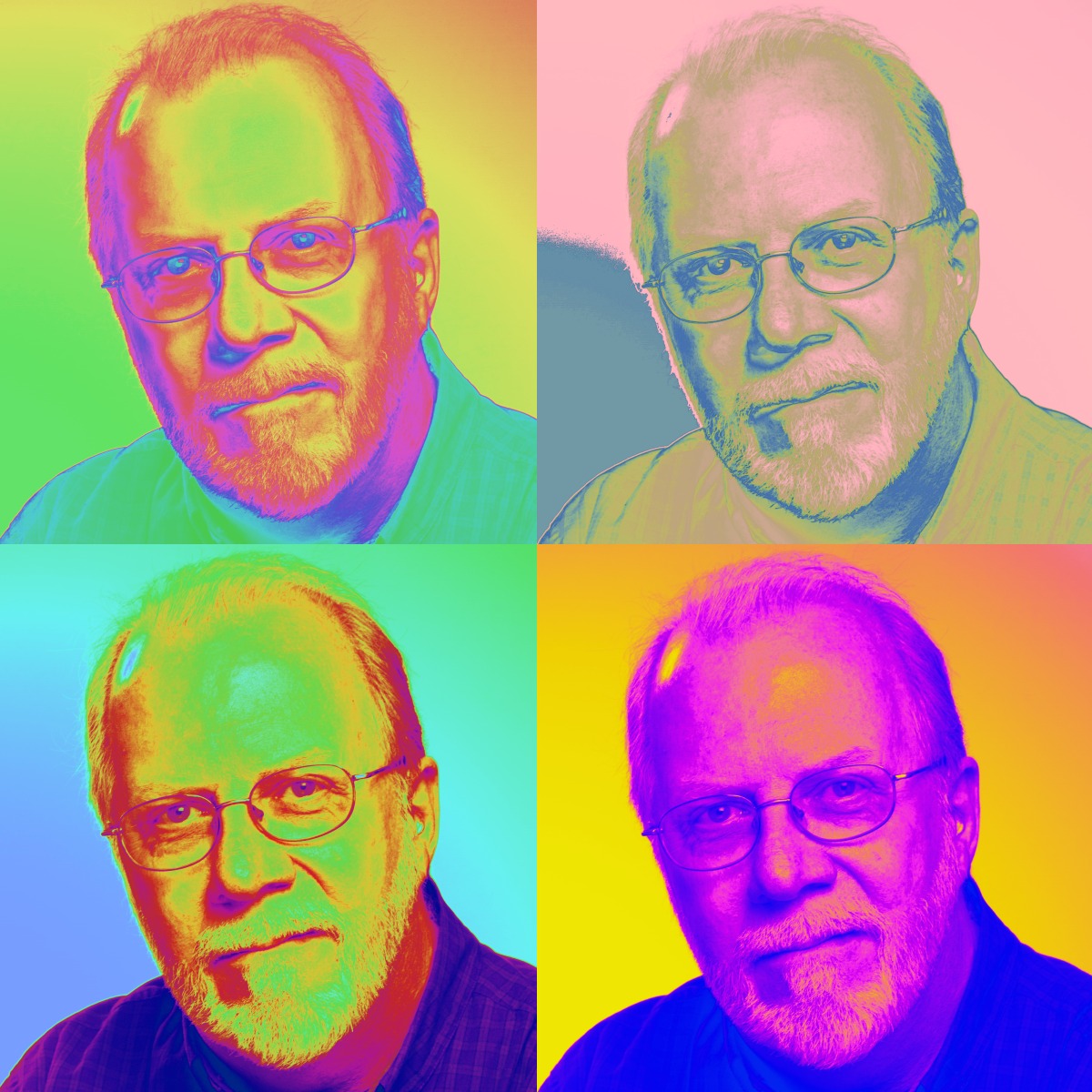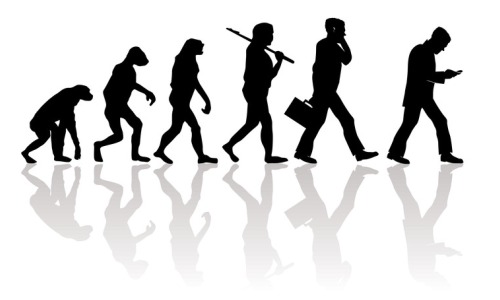
Digital.
Art.
Print.
How do these words relate?
Isn’t a print a physical object, mutually exclusive to a bunch of pixels on a computer screen? And can a digital creation be a work of fine art?
There seems to be a spectrum of uncertainty around the word digital, and all that it implies, especially relating to the world of fine art. Where you are on that spectrum will determine your comfort level with the works of many up-and-coming artists who have embraced digital creativity and are integrating it into their process and their work.
So if you are on the lookout for rising stars in the art world, you’ll want to get warm and comfy with digital. It’s here to stay, and it’s not just about video artists. There’s a lot more to it, and it’s far more exciting than you may have imagined.
So here we’ll look at a few intriguing ideas surrounding digital creation. By the end of this article I hope you’ll be just a little further along that spectrum, towards the warm end, and your comfort level higher.
Speaking of comfort level, a quick story: during the mid 1980’s I was an illustrator/designer working for one of the biggest advertising photography studios in Canada. Back then, all our work was created by hand, using drafting equipment: set squares, compasses and ink pens on smooth white art board. Hand crafted. I remember hearing all kinds of alarming rumors about “computer graphics”, how brutally efficient and precise they were, and how “they”, an evil cohort of computer “operators” were going to put all of us artists out of a job. It felt like being stuck inside a stalled car in the middle of railway tracks, with a dark train hurtling towards me.
Fast forward to late 1994 and I was starting my own freelance 3D animation business. So what happened in between? I accepted it. Grudgingly, I admit. Then I began studying it. Started to actually get fascinated by it. Then full-on excited by the possibilities, as not only 3D animation, but photography and graphic arts embraced digital, and it got more and more sophisticated. Not just faster, more efficient, etc. But richer, better, and vastly more sophisticated entirely.
My comfort level evolved rather a long way along that spectrum! Yours can too.

So let’s tap into a few uncertainties about digital, and see what we can resolve.
Does digital = ephemeral?
By ephemeral, I mean without any physical, tangible form. Is a digital creation necessarily forever locked within a screen of some sort, either a computer monitor or a TV? Not at all. And this is one of the pivotal ideas here: digital can be the starting point, but doesn’t have to be the finished product such as a 3D animation. My own art is in this category: I use 3D animation software to initiate, explore and create digital works, but at the end of it all, they are intended to be fine art prints. Digital can be a means, not an end.
Does digital = “mechanical?
Circling back to the story above, one of my greatest fears was that all the life would be squeezed out of illustration by computer “operators” running very technical software. The human touch would simply evaporate without leaving so much as a fingerprint. For a while, it almost seemed that it really would play out like that, and “computer art” or “Mac art” was a dirty, derogatory put-down.
But life and art move forward, and today technologies of all kinds allow us to make organic, capricious, painterly, and natural forms and textures. Fractals are used extensively in 3D animation textures, for example, and are so variable and complex that they can produce photo-realistic terrains for movie special effects. But digital textures are not chained to realism, and can simply be played with, to create entirely original visual expressions.
I do it all the time, so do other artists.
Digital = Experimental
Digital can allow artists to be wildly experimental at the front end of their artistic process, no matter what their end medium. The key thing about digital creativity in the fine arts is that it’s not locked down, in the early stages of work. It’s far more open-ended.
You can experiment endlessly if you need to, saving out your work in various iterations, and choose from the best. Or combine different elements. Or delete elements. In many ways the digital process is a lot richer due to this early stage flux. You can commit to a final iteration after you have tried variation after variation. Unlike direct painting, where you commit very early on, and can’t go back or sideways a few steps to re-think, refine and finesse.
Digital = Flexible
A digital creative process can be as deep or as brief as suits any given artist’s temperament. It does not have to be the entire story, as with 3D animation, digital video or graphics. My own process is mostly digital, but the final end artwork is a physical fine art print, output onto the best quality archival paper, then framed.
But many painters come at it the opposite way: they make a painting, then use digital photography to capture the work, and make the print from there. Some artists even go back and forth between physical and digital, and that’s great. Digital is a two-way street, not one-way.
Digital = Accurate
Color can be controlled and finessed in the digital realm far more than with paint. Once in the digital color space, an artist can refine color with some incredibly versatile tools, to achieve the precise color balance she wants.
An artist who creates a painting, and then wants to change all the colors of the painting subtly or boldly has very limited options, such as glazing over with transparent paint. And that essentially changes the work’s character to something else.
But digitally, they can modify to exactly the hue, saturation and brightness they desire.
Digital = Prolific
Carrying on from the above, a digital work can remain inside a computer, or be output to a series of art prints. And it can also be output as a pre-painting study. This allows the artist to improvise then refine their work, before using the digital output as a guide, similar to drawing-and-color studies in ages past, to create a finished large scale painting.
Yet another aspect of digital is the fertile nature of it, its ability to be reproduced many times without the source suffering any kind of degradation. That’s in contrast to silkscreens and etchings, in which the source masks or plates will wear after many copies.
Finally, the prolific nature of digital art can allow artists to spread and multiply their exposure, thus building a reputation faster. How quickly can a reputation be built, 20 prints at a time? That’s pre-digital career growth. Open edition digital art prints can be enjoyed by a much larger audience in much less time. And can then be followed by more exclusive offerings, once a wide base of exposure has been built.
Digital = Authentic
What about limited editions? How can artists secure digital print editions so as to truly limit an edition of a print? In this age of art forgery and fakes, it would be possible to take a digital work and print out, say, 100 versions of “print #1″, offering them to different markets. Or claim to destroy all digital versions after a certain number have been printed.
Those are indeed possible, but they rely on basically one person’s word. And these days there are digital security features and methods that, similar to PGP data encryption, require the input of a second party to complete a verification.
It’s possible to build tiny, incredibly subtle, encrypted watermarks into digital prints and then use lawyers to register and record the other verification component of a code, to protect and secure limited edition digital prints. Beyond this, digital authentication is a technology enjoying an explosion of interest and development. For more information and news, Google ” digital authentication technologies”.
I am planning the release of limited editions of my own works in the future. They’ll all use some pretty sophisticated systems to protect collectors. If you’re interested, please enter your email address in the opt-in form to subscribe to my personal announcement list, where I will announce new developments.
Digital = Archival
Digital printing advances at a spectacular rate, and is rapidly closing the gap with traditional fine art printing inks. The longevity of digital art printing inks has been driven mostly by fine art photography. Prints have been the foundation of many photographer’s reputations for many years. Ansel Adams is a perfect example.
Harald Johnson, author of “Mastering Digital Printing” says in his 2nd edition of the book “When I recently called Craig Krull of well-known Craig Krull Gallery in Santa Monica, California, to check in on inkjet’s adoption by the art gallery world, he explained that “most photographers are doing it today, even William Eggleston.” He continues, “As long as it’s pigment vs dye inks, and it’s archival or holds up over time, I have no problem including digital pigment prints in the gallery.”
Inks, papers and printing technology are advancing at a spectacular pace, and there are now pigment / paper combinations that are as accepted in many of the best art galleries as previous forms of art prints.
Does digital = evolved?
That’s up to you! What do you think about digital fine art prints at this point, given the above? Are you somewhat more open? As I mentioned at the beginning of our little journey, I was intimidated and mistrustful of most things digital, and at the beginning grossly underestimated it. But, life and art move forward. Hope I was able to help you move your comfort zone just a little, along that spectrum.

